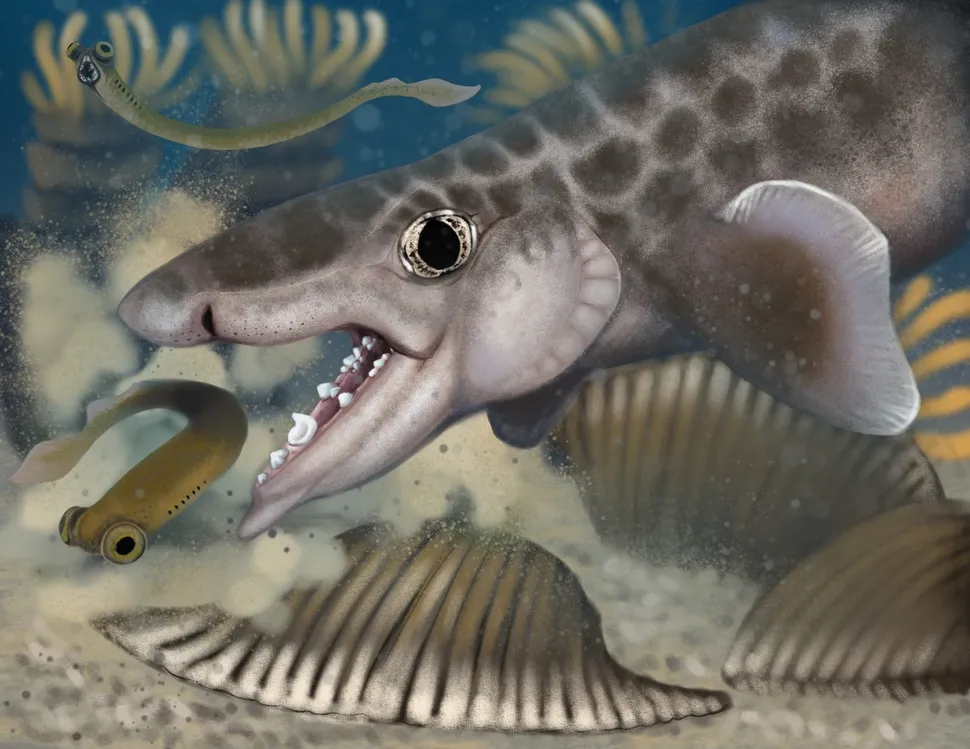The National Park Service has announced another ancient shark discovery at Mammoth Cave in Kentucky. The latest find, named Macadens olsoni, had a unique curved row of teeth and lived around 340 million years ago.
Tiny Ancient Shark With Curved Teeth Discovered in Mammoth Cave
The National Park Service has announced a fascinating new fossil discovery deep within Mammoth Cave, the world’s longest cave system located in Kentucky. The latest find is a small, ancient shark species named Macadens olsoni, which lived approximately 340 million years ago.
Despite its modest size — less than a foot long (30 cm) — Macadens olsoni had a striking feature: a curved row of teeth, ideal for crushing mollusks and worms. This adaptation suggests the shark was a bottom-feeder, navigating the shallow marine environment that once covered what is now central Kentucky.
“This discovery is a remarkable addition to our understanding of ancient marine life,” said Barclay Trimble, superintendent at Mammoth Cave National Park. “It underscores the importance of preserving and studying our natural history.”
A Window Into the Distant Past
Mammoth Cave’s limestone walls were formed between 320 and 360 million years ago, when the region lay beneath the Mississippian Sea, a shallow saltwater basin teeming with prehistoric life. Though the cave passages themselves only formed 10 to 15 million years ago, they now serve as a natural vault for marine fossils from a much older time.
So far, over 70 ancient fish species have been identified within the cave’s vast network — which currently spans more than 426 mapped miles (686 km), with new tunnels still being discovered.
A Name That Honors Legacy
The new species’ name reflects its origins and those who helped bring it to light. The genus name, Macadens, honors Mammoth Cave itself. The species name, olsoni, is a tribute to Rickard Olson, a retired park scientist recognized for his decades-long work in fossil documentation within the cave system.
The fossil was recovered from the Ste. Genevieve Formation, a rock layer dating back to the Carboniferous period (roughly 359 to 299 million years ago). During this era, the area likely resembled a vibrant reef ecosystem.
Linking Past and Present
“This finding not only enhances our knowledge of ancient marine ecosystems,” said Trimble, “but also emphasizes the critical role of paleontological research in our national parks.”
Each fossil discovery, like that of Macadens olsoni, helps scientists reconstruct prehistoric environments and offers educational opportunities for students, researchers, and visitors alike. As Mammoth Cave continues to yield new fossils, it further cements its role as a living classroom of Earth’s deep past.
